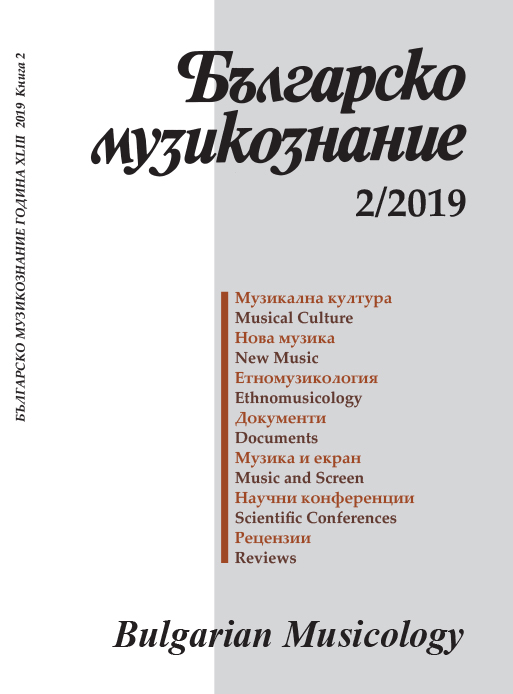Дескриптивна и прескриптивна нотация: възможности и ограничения
Descriptive and prescriptive notation: possibilities and limitations
Author(s): Peter KerkelovSubject(s): Fine Arts / Performing Arts, Music, History of Art
Published by: Институт за изследване на изкуствата, Българска академия на науките
Summary/Abstract: This article is part of larger research on the notation aspects of an improvisational type of music making and is motivated by the idea of finding appropriate notation methods for rendering ornamentation in Bulgarian traditional music. When faced with the task of transcribing traditional music from a field recording, one is most likely to fix a particular performance into notation. Taking into account Nettl’s outlook on the largely descriptive priorities of notation, the article puts forward the view that transcribing music is oriented primarily towards the sounding material, while in the case of ornamentation one seeks to describe through notation those processes which give momentum to the interpretative ideas for an ornament. Thus, descriptive notation is not very effective when dealing with music where the final sound variant undergoes multiple, constant alterations with each successive performance, especially when improvisational elements, such as ornamentation, are present. Nevertheless, the researcher is “forced” to work within a fiveline staff notation system because of its widespread practical use. In the context of ornamentation the transcriber should, in a way, “listen beyond what is being heard” trying to arrive at a summarized model of the ornament. This model is a non-time related phenomenon existing in a latent form in some specific sections of the song. For this purpose the term “treatment zone” has been proposed – a unit of musical motion whose inner and outer time parameters vary depending on the interpreter’s individual choices. Thus, a door is opened onto various approaches to transcription which combine both descriptive and prescriptive techniques aiming to capture the non-time related model, which is at the very basis of ornamentation. The text argues for a concrete notation method, called “zonal notation”, which is to be developed further in a future article.
Journal: Българско музикознание
- Issue Year: 2019
- Issue No: 2
- Page Range: 44-62
- Page Count: 19
- Language: English, Bulgarian
- Content File-PDF

